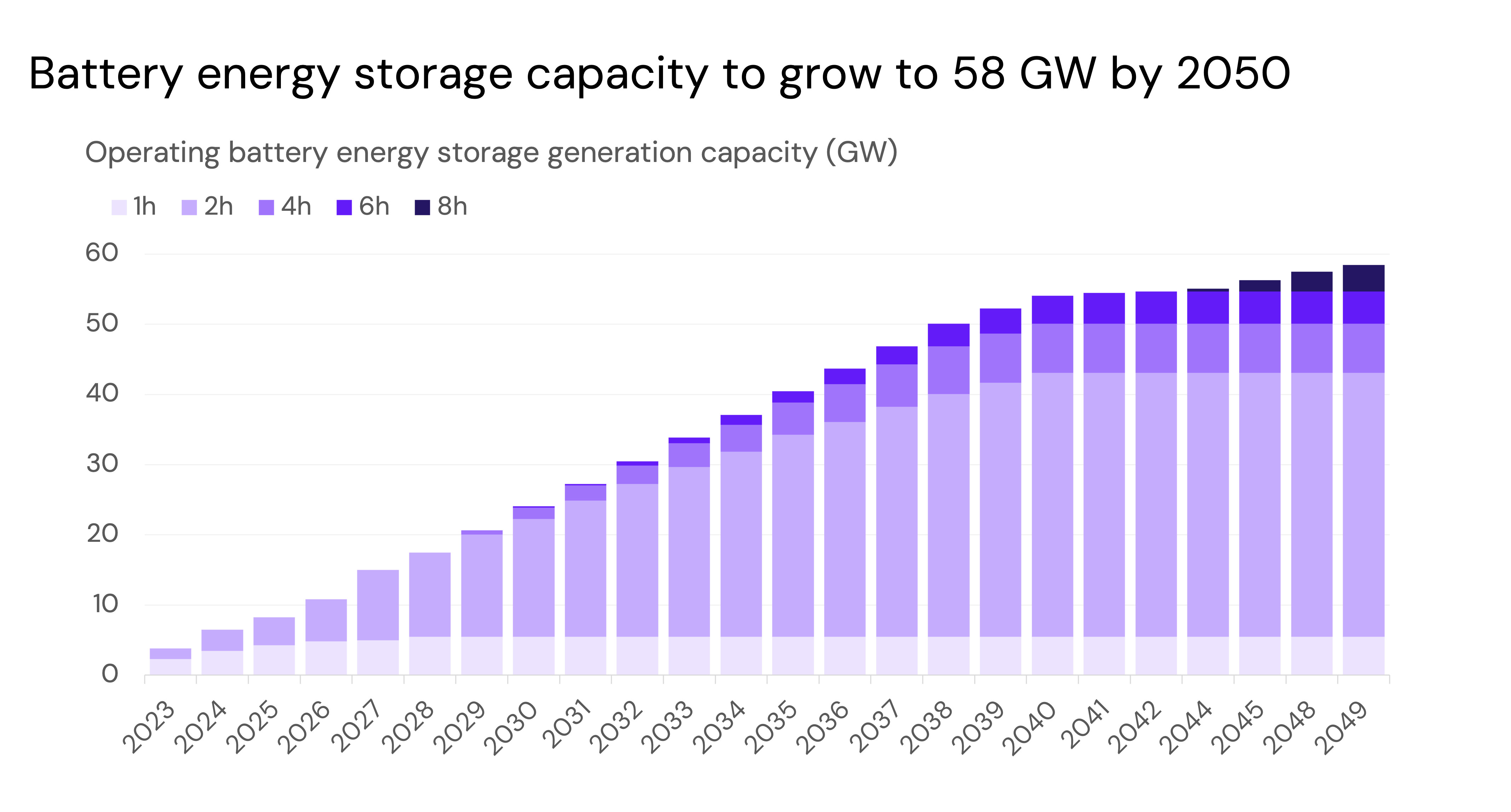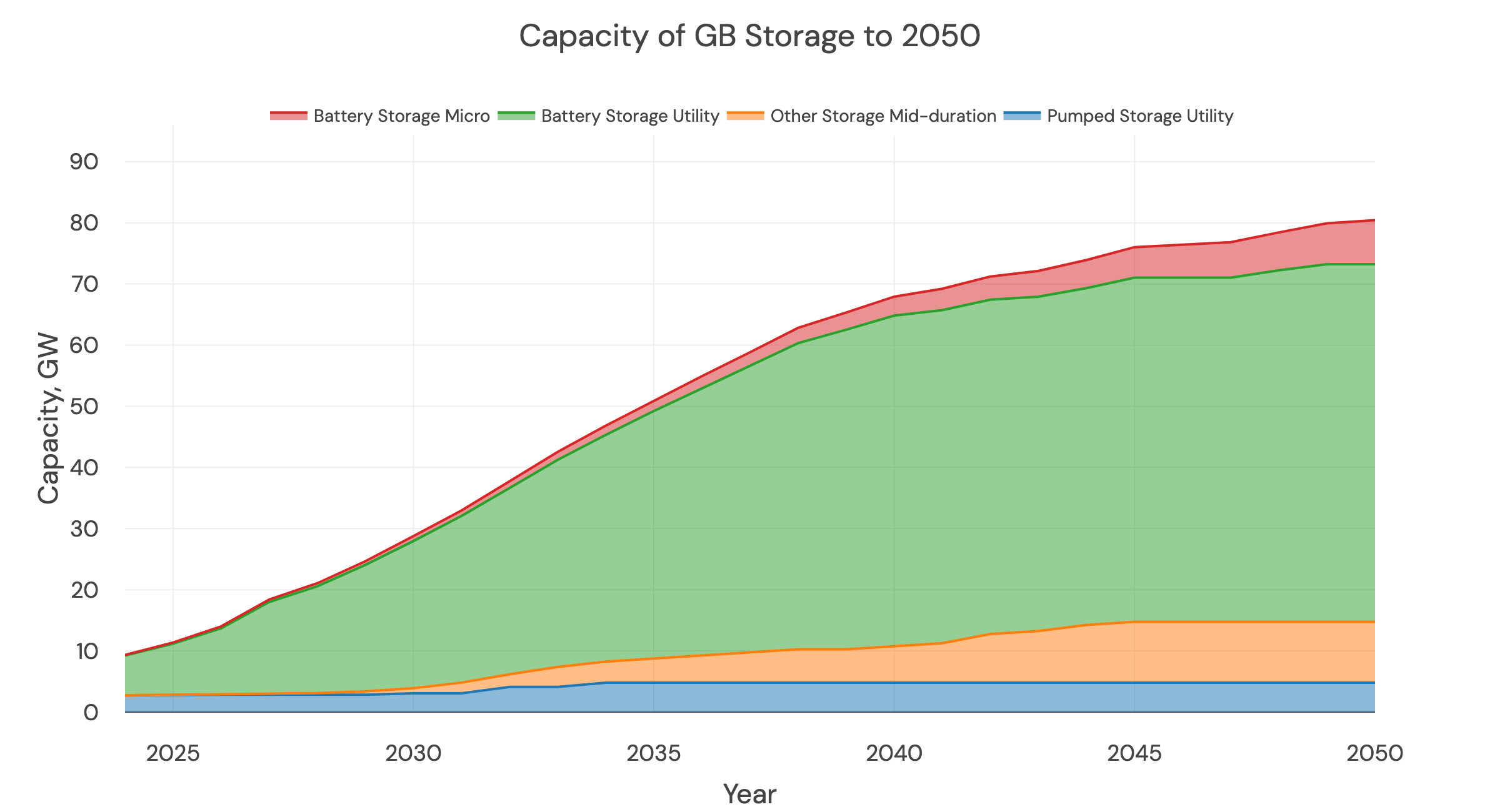Storage (v3)
There is GW of energy storage on the system by 2050
The FES Consumer Transformation scenario (2023) put 35GW of storage on the system by 2050, but we think that's not enough.
And our capacity expansion model agrees!
The 2023 CM auctions (a good way of assessing how many projects are at a stage where the developers are confident they'll get built as non-delivery penalties are high) show 12GW of battery storage by 2027.
Let's consider the global growth of energy storage, as put by Michael Liebreich:
The same thing has been happening for batteries – they have in fact been racing through doublings even faster than solar: five of them in the last eight years. In 2015, some 36GWh of lithium-ion batteries were produced; last year the total was around 1TWh. Over the past decade, cell costs have come down from $1,000 to $72 per kWh, and at the same time energy density has doubled and degradation per cycle has halved. We are also seeing new battery chemistries such as iron-air and sodium-ion that promise to be even cheaper than lithium-ion.
Battery storage is the only non-subsidized, commercially proven, scaled technology that can manage renewable intermittency, grid constraints, balancing, etc. CATL have recently released new numbers for their battery cells reducing costs by $100/kW.
There is significant growth of the battery fleet through the 2030s, with longer duration systems coming online in the 2040's
Our capacity expansion model takes CAPEX and OPEX numbers from NREL, and models Capacity Market and wholesale revenues for trading storage to determine their profitability - for 1, 2, 4 and 8 hour systems.
The resulting buildout is below.


The above shows other types of storage as well, which are taken from the FES.
Pumped storage capacity will grow
The FES says that an additional 3GW of pumped storage will come online in the early 2030s. This is largely driven by a significant new project (Coire Glas) in Scotland and the conversion of smaller hydro sites to pumped hydro.
Other storage will come online
Mid-duration (4 hours +) will come online in the late 2020s. The 2022 FES scenario does not have any long-duration storage in it.
Updated 9 days ago
Next we look at the other big tech type for flexibility: interconnectors.